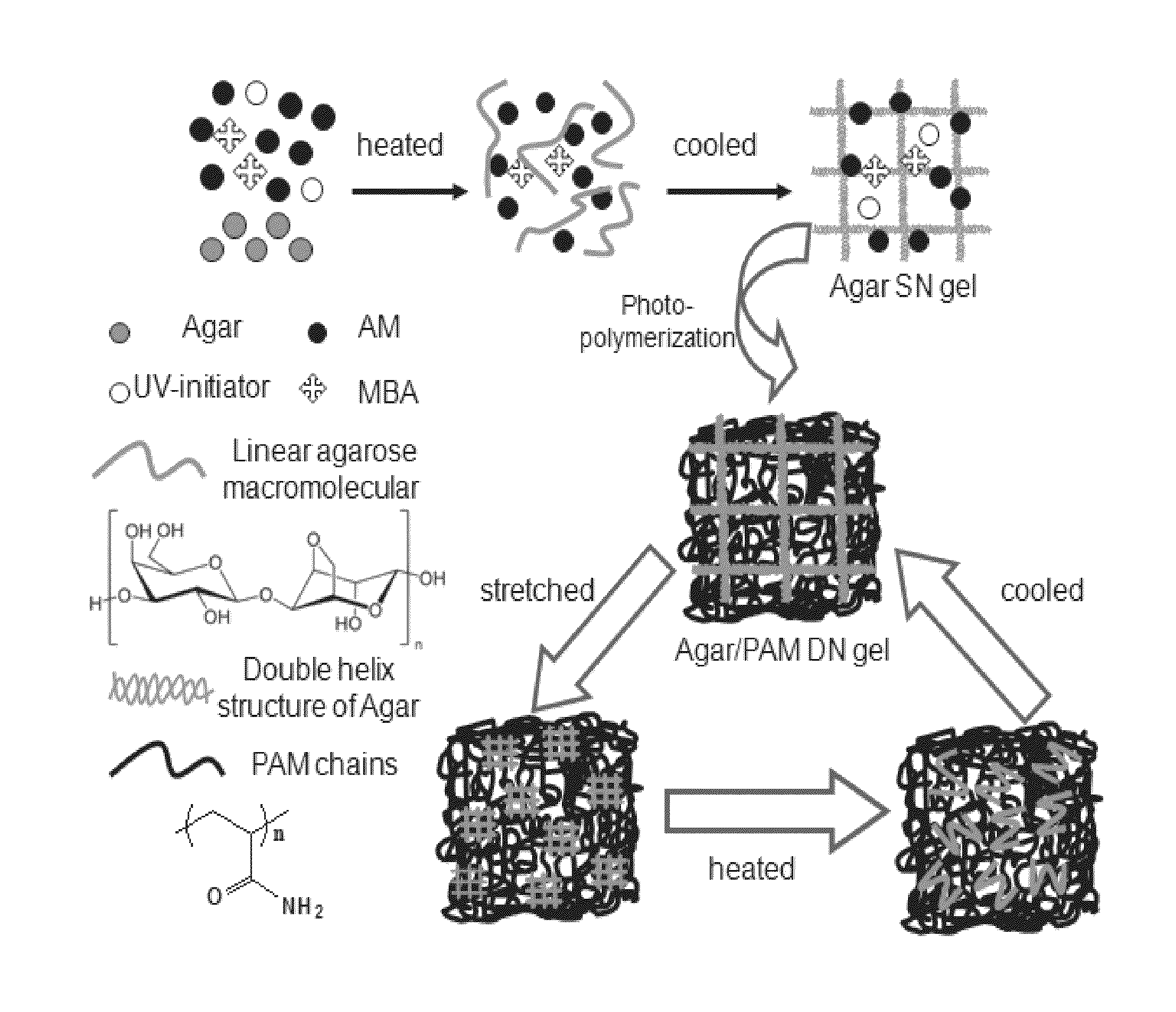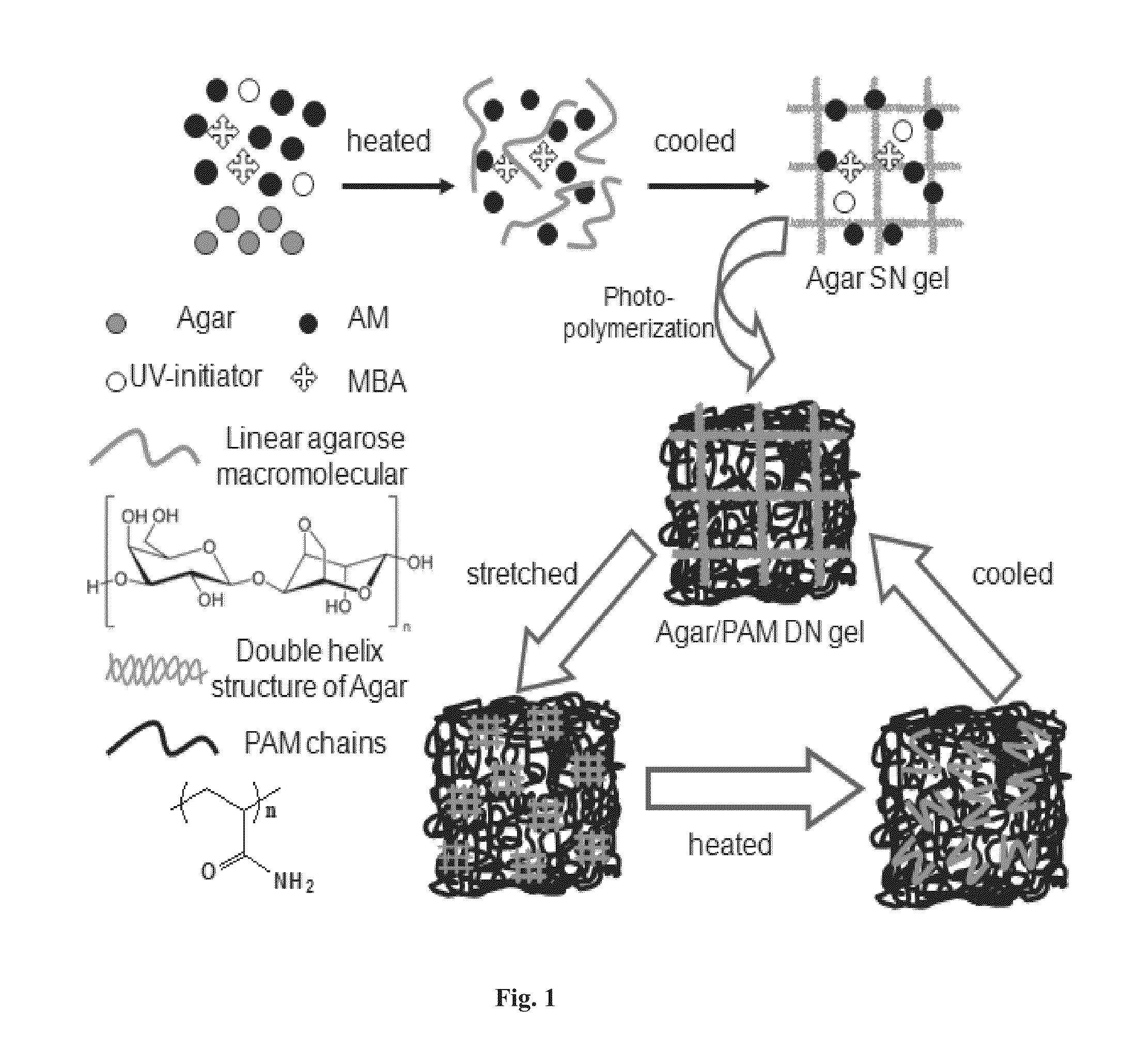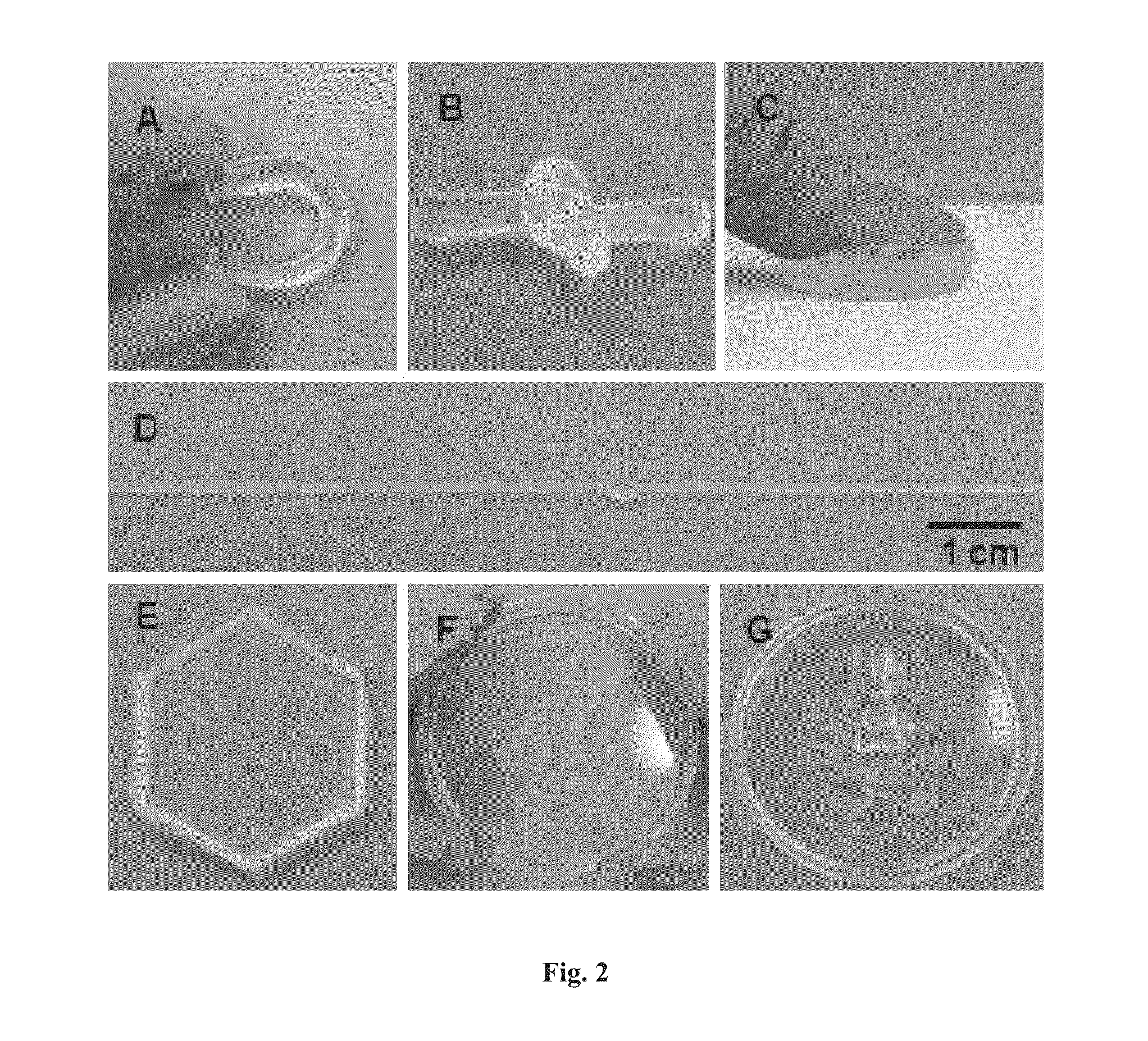One-pot synthesis of highly mechanical and recoverable double-network hydrogels
a double-network hydrogel, highly mechanical technology, applied in the field of new hybrid physicallychemically crosslinked double-network hydrogels, can solve the problems of poor mechanical properties of most synthetic hydrogels, poor recovery, poor strength, etc., and achieve high recoverability and mechanical properties.
- Summary
- Abstract
- Description
- Claims
- Application Information
AI Technical Summary
Benefits of technology
Problems solved by technology
Method used
Image
Examples
example
[0081]A double network hydrogel was synthesized by a one-pot method. Briefly, 100 mg agar (gel strength >800 g / cm2 with a melting point of between 85 and 95° C.), 900 mg polyacrylamide, 0.0284 g 2-hydroxy-4′-(2-hydroxyethoxy)-2-methylpropiophenone (Irgacure 2959, 1 mol % of polyacrylamide), 59 μL of N, N′-methylene-bis-acrylamide solution (MBA, 10 mg / mL, 0.03 mol % of polyacrylamide) and 5 mL H2O were added into a tube. After three degassed cycles, the tube was sealed under N2 protection and heated in a 90° C. oil bath. After heating for several minutes, the agar powder was dissolved and a transparent solution was obtained. Then, the resulting solution was injected into a glass mold to cool down at room temperature for agar gel formation. Once formed, the agar gel was photo-polymerized to form a Agar / Polyacrylamide double network hydrogel using ultraviolet light with a 365 nm wavelength and 8 watt power for 1 hour. The obtained double network hydrogel was sealed in a plastic tube fo...
PUM
| Property | Measurement | Unit |
|---|---|---|
| temperature | aaaaa | aaaaa |
| temperature | aaaaa | aaaaa |
| concentration | aaaaa | aaaaa |
Abstract
Description
Claims
Application Information
 Login to View More
Login to View More - R&D
- Intellectual Property
- Life Sciences
- Materials
- Tech Scout
- Unparalleled Data Quality
- Higher Quality Content
- 60% Fewer Hallucinations
Browse by: Latest US Patents, China's latest patents, Technical Efficacy Thesaurus, Application Domain, Technology Topic, Popular Technical Reports.
© 2025 PatSnap. All rights reserved.Legal|Privacy policy|Modern Slavery Act Transparency Statement|Sitemap|About US| Contact US: help@patsnap.com



